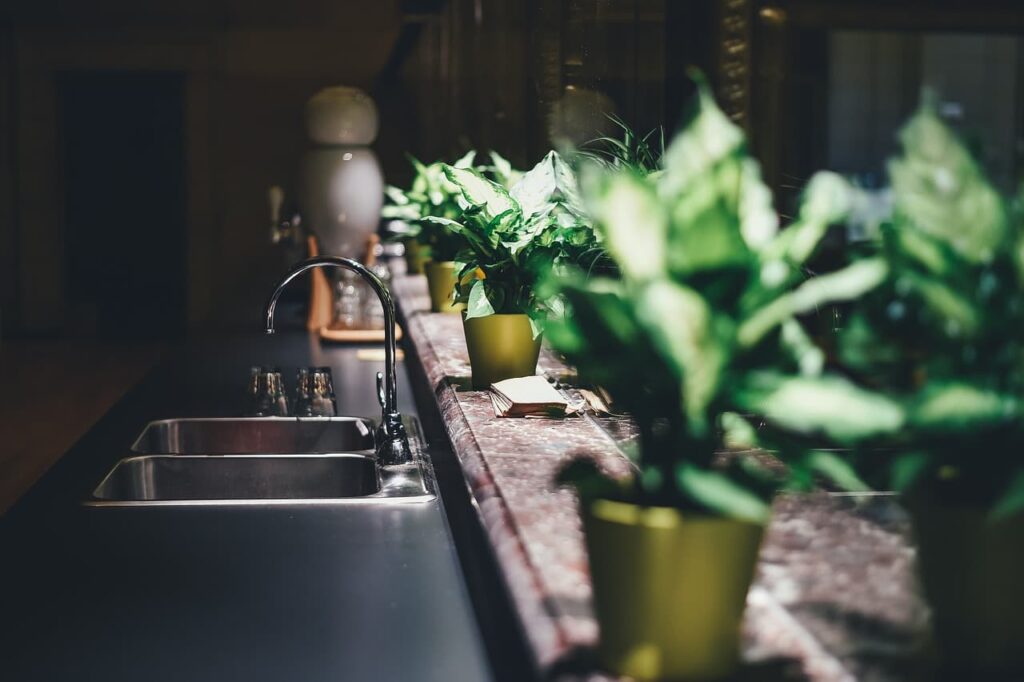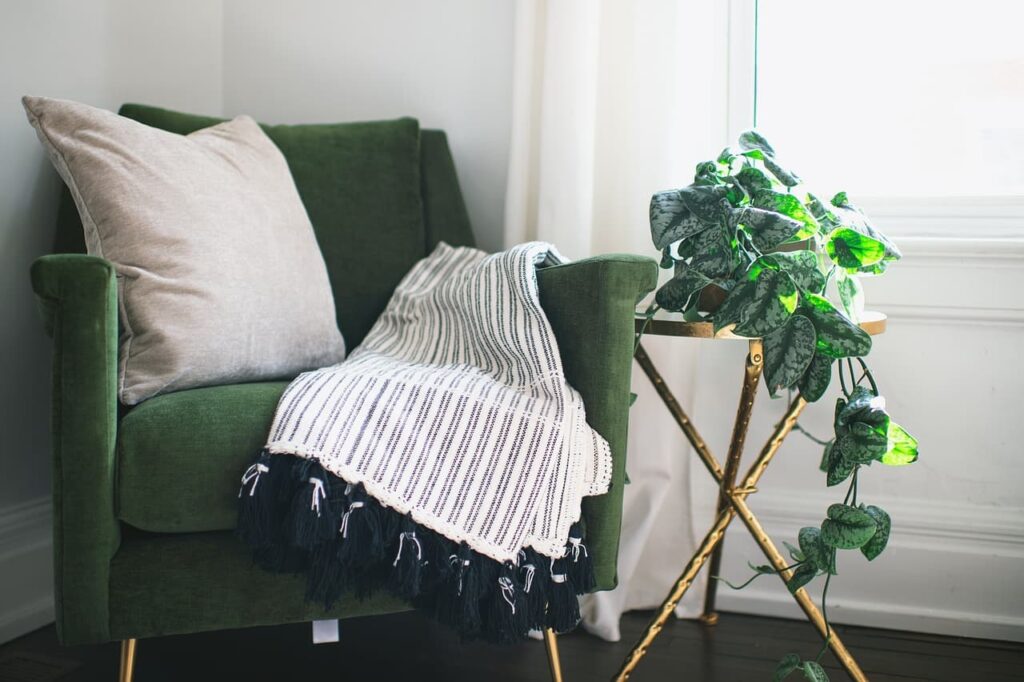In recent years, there’s been a notable surge in the use of plants as a key element in interior design. Whether it’s a lush green corner in a living room or a solitary plant on an office desk, plants have become synonymous with modern living spaces. This trend has sparked a debate among design enthusiasts and professionals: what’s better for interior spaces, decorative (artificial) plants or real (live) plants?
The Appeal of Decorative (Artificial) Plants
Maintenance and Durability
One of the main advantages of artificial plants and flowers is their low maintenance. Unlike real plants, they don’t require watering, sunlight, or pruning. This makes them a practical choice for busy individuals or places where natural light is scarce. Their durability also means they remain unchanged in appearance over time, providing consistent aesthetic appeal.
Allergies and Health Considerations
Artificial plants are an ideal option for those with plant allergies. They allow people to enjoy the aesthetic benefits of plants without the potential health concerns.
Variety and Consistency
The market offers a wide variety of artificial plants, from exotic tropical varieties to local flora, ensuring there’s something for every design theme. Their appearance remains consistent, avoiding issues like seasonal shedding or growth variations.

The Benefits of Real (Live) Plants
Air Quality and Health Benefits
Real plants are not just visually pleasing; they also purify the air. Through photosynthesis, they absorb carbon dioxide and release oxygen, improving indoor air quality. Some species are particularly effective at filtering out toxins and pollutants, contributing to a healthier living environment.
Aesthetic and Natural Feel
There’s an undeniable authenticity that real plants bring to an interior space. Their unique textures, varying shades of green, and natural growth patterns add a layer of complexity and beauty to design that artificial plants cannot replicate.
Psychological Benefits
Studies have shown that the presence of live plants in indoor spaces can reduce stress, boost mood, and enhance creativity and productivity. This connection to nature, known as biophilia, underscores the psychological benefits of incorporating real plants into our living and working environments.
If You Go with Real Plants – Consider Pet-Friendly Ones
When choosing real plants for a space that’s shared with pets, it’s essential to consider their safety. Many common houseplants can be toxic to cats and dogs if ingested.
Money Trees: A Popular and Safe Choice
One excellent option is the Money Tree (Pachira Aquatica). Known for its braided trunk and lush, green leaves, it’s not only visually appealing but also money trees are safe for cats. It’s believed to bring good luck and prosperity, making it a popular choice among plant enthusiasts.
Comparative Analysis: Decorative vs. Real Plants in Interior Design
Visual Impact and Authenticity
While artificial plants can be nearly indistinguishable from the real thing, there’s a level of authenticity and vitality in real plants that is hard to replicate. The subtle growth changes and natural imperfections add a dynamic element to interior spaces.
Cost Implications
When it comes to the financial aspect of incorporating plants into interior design, both artificial and real plants have their own cost structures that need to be considered.
Initial Investment
Artificial plants generally come with a higher initial price tag compared to their real counterparts. High-quality artificial plants that look realistic can be particularly costly. However, this is a one-time investment, as they require no ongoing care.
In contrast, real plants are typically more affordable at the outset. Even some of the more exotic or larger indoor plants are usually less expensive than high-end artificial plants. However, the costs don’t stop at the purchase price.
Maintenance Costs
The true cost difference becomes apparent when considering maintenance. Real plants require ongoing care, including soil, fertilizer, pots, and tools for pruning and care. Additionally, some real plants may need to be replaced if they die, which adds to the overall cost. The energy cost for providing sufficient light can also be a factor, especially in spaces without natural light, necessitating the use of grow lights.
Water consumption, while generally minimal for household plants, is another consideration, especially in regions where water conservation is a priority or where water costs are higher.

Long-Term Costs
Over time, the cost of maintaining real plants can add up. The need to replace plants, buy soil and fertilizers, and possibly invest in additional lighting can make real plants more expensive in the long run compared to artificial plants, which incur no ongoing costs after purchase.
Aesthetics and Value
Another aspect to consider is the aesthetic and emotional value plants add to a space. While difficult to quantify, the benefits of real plants in terms of air purification, psychological well-being, and aesthetic appeal might justify the ongoing costs for many people. On the other hand, artificial plants provide a constant aesthetic without any maintenance or replacement costs, which can be a significant advantage for commercial spaces or busy households.
Adaptability to Different Design Styles
Both artificial and real plants can adapt to various design styles. However, real plants offer a natural, organic feel that complements eco-friendly and minimalist themes exceptionally well, whereas artificial plants can be perfect in ultra-modern or industrial settings where maintenance and natural light availability might be challenging.
Conclusion
When it comes to the debate between decorative (artificial) plants and real (live) plants in interior design, the decision is highly subjective and depends on various factors unique to each individual or space. Both options have their distinct advantages and can significantly enhance the aesthetic of an environment when chosen thoughtfully.
Artificial Plants are ideal for spaces where maintenance is a concern, or environmental conditions are not conducive to live plants. They offer consistency in appearance, a wide variety of options, and ease of placement without worrying about light or water requirements. They are particularly suited for high-traffic commercial spaces or homes where the occupants have limited time for plant care.
Real Plants, on the other hand, bring a piece of nature into indoor spaces, offering benefits that go beyond mere aesthetics. They improve air quality, enhance psychological well-being, and add a dynamic, authentic element to interior design. Their natural imperfections and the subtle changes as they grow provide a unique charm and a sense of connection to the natural world. They are especially fitting for spaces where occupants can dedicate time to their care and appreciate the natural ambiance they create.

Ultimately, the choice between artificial and real plants should be guided by the specific needs and conditions of the space, as well as the preferences and lifestyle of the occupants. In some cases, a mix of both can provide the perfect balance, combining the ease and consistency of artificial plants with the organic beauty and health benefits of real ones.
In conclusion, there is no one-size-fits-all answer to whether decorative or real plants are better for interior design. The ideal choice varies based on practicality, maintenance capabilities, aesthetic preferences, and the unique characteristics of the space being designed. By carefully considering these factors, one can make an informed decision that brings life, beauty, and a personal touch to their interior spaces.